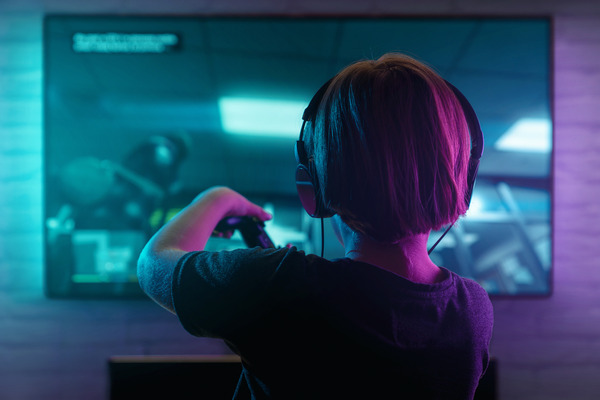
The videogames sandbox like the well-known Minecraft They have not only been a true phenomenon in the world of youtubers: They also contain important educational potential.
In this article we will explore the wide range of pedagogical possibilities they present.
The precedents: games in real environments
There is evidence that the game has been part of human civilization since its most remote origins and in all cultures and societies (Gértrudix Barrio and Gértrudix Barrio, 2013), forming an element of interactivity between young people and adults, through which They have been educated and have learned.
Along the centuries, The game has been changing at the same time as all the different cultures and societies have changed adapting to their material and cultural characteristics and adopting very heterogeneous modalities and types among them.
To give an illustrative example, a few decades ago, a large part of the elderly grew up in a rural environment in which games involved grazing animals, such as cows or sheep, since in many cases they had practically no resources available. of no object to play with other than common objects, animals and imagination. As the years went by and the arrival of industrialization and mass production, young people went from playing with common objects to playing with dolls and toys, which later introduced small electronic elements that produced sounds or small movements.
Currently, thanks to the strong development of new information and communication technologies (hereinafter called ICT), gaming methods and tools have evolved, adapting to this new era, just as they have been doing during the passing of the previous centuries. This means that The human being evolves and all the elements that surround it do so as well ; Therefore, we must understand that young people in this new era are accustomed to living together and growing up regularly using ICT.
The arrival of the educational video game
A basic gaming element for today’s youth is video games. Just as it happened in traditional game modalities, we can also educate them through this new tool (which is increasingly followed and used), in addition to promoting autonomous teaching of very varied contents and sometimes of considerable complexity.
The sandbox video game
Within the wide range of video game genres, which can all offer us different ways to learn and enhance cognitive skills, there is one genre that stands out among all due to the countless possibilities it can offer: video games. sandbox type.
This genre of video games is known for offering its players an open world with great possibilities for modifying and creating the environment, in addition to following a non-linear plot, where the objectives are often set by the player himself, thus allowing him the opportunity to enhance his creativity, encouraging self-narrative and the construction of stories and experiences. If we add to this cocktail the social part that they usually include, These types of video games become a great tool to promote learning creativity and, of course, fun.
The limits are set by oneself
Under this new perspective that this genre of video game gives us where the limits are set by the user’s imagination, new possible applications of these emerge in education and teaching both outside and inside the classrooms, thus giving rise to experiments carried out by communities of educators who use a sandbox video game, called Minecraft, in schools, to carry out and demonstrate the benefits generated with the use of these applications.
The impact of this sandbox video game is of such magnitude that there is an extensive community, both in Spain and abroad, that is dedicated to studying and implementing Minecraft in classrooms to encourage the involvement of students in learning certain contents and in promoting creativity and autonomous learning.
Education and entertainment go hand in hand
As a result of the study of the use of video games for these purposes, the term was born edutainment (Gértrudix Barrio and Gértrudix Barrio, 2013), fruit of the union of the word “education” (education) and “entertainment”, on which several investigations have emerged that have demonstrated the great results obtained with the educational use of digital immersive environments, that is, sandbox video games, which in the words of Sorathia and Servidio (2012): “offer a place for the empirical application of constructivist theory.”
Among the results of these investigations, the quality of the learning process stands out, since it allows students to acquire different perspectives of phenomena and experience multiple situations in which they acquire knowledge that is easily transferable to real life (Aldrich, 2009), (Dede, 2009), (Kapp and O’Driscoll, 2010). These teaching applications are possible thanks to the non-linearity of this genre of video games, which makes it easier for the teacher or trainer to personalize and shape the objectives of the game in order to produce a learning and fun experience. to the students.
Beyond the classrooms
Despite the possible uses that teachers can and are making in many areas of the world, the educational applications of sandbox video games like Minecraft are not limited solely and exclusively to the classroom environment under the supervision of an adult. In fact, The simple and apparent recreational use of these video games has a strong educational potential for young people since in most cases, the content of these video games and the possibilities it offers are usually very applicable to real life, so that what at first glance may seem like a simple game, can become a surprising experience. educational.
Furthermore, both directly and indirectly, the player will be forced to use his imagination and therefore train his creativity capacity which should be a top priority element in compulsory education.
Another great advantage of using sandbox video games is that the vast majority of them are usually accompanied by an extensive community of online players who promote, through complex codes of conduct, prosocial activity and a feeling of inclusion whatever they may be. the socioeconomic differences of the players; so that they end up being, worth the expression: “simulators of good citizenship”, providing extra value to the educational experience resulting from their use.








